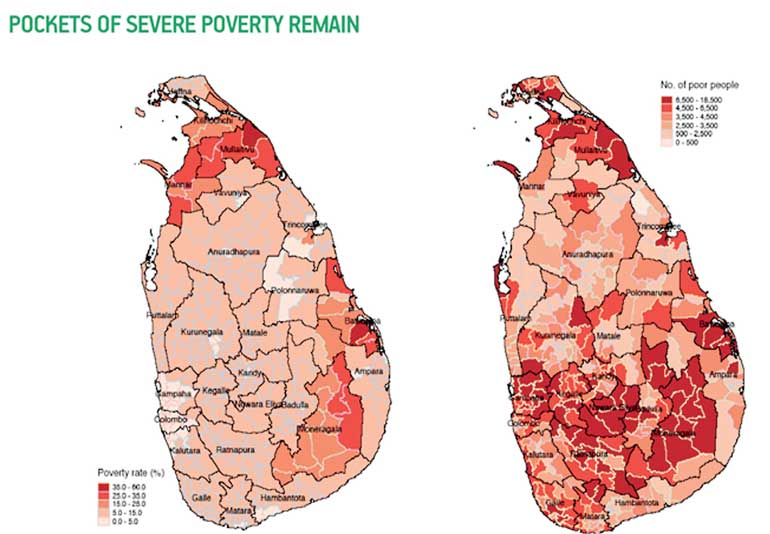
- 15.2% – National poverty index excluding militant controlled areas in 2006
- 8.9% – One year after the end of the civil war in 2009
- 6.8% – 2016?
- Promising excerpts for any analyst on its face value, these figures masquerade a true political coupe to libel Sri Lanka in the global marketplace
In February 2016, a report from the World Bank (WB) stated that a staggering 40% of the Lankan population are already in or are in risk of poverty. The coalition responded to this by enacting the WBA bill which consolidated 39 welfare programs, while its very own Ravi Karunanayake belittled these claims, going as far as criticising those in this State as “…a barrier in the economy which disrupts the smooth operation of the free markets”. For a man educated at Oxford, the birthplace of modern humanism, I say, shame on you sir.
 Furthering our understanding into the problem, it is undoubted that the civil war and its aftermath would always be the beginning for cause. Factors such as rural isolation, debasing and meddling economic exploitation, and in-access to micro-financing can be traced back to the war. Circumventing it, is the naive looting of corrupt politicians, as per the Household Income and Expenditure Survey (HIES), which clearly articulated that “certain social intervention benefits (Samurdhi) were being misappropriated to undeserving people unlike agri workers who actually needed it”. It is unquestionable that 90% of the poor live in rural areas, while 80% of the national population call it home as well. Due to the war and its aftermath, rural areas are isolated from social economic infrastructure, cities and markets, limiting income earned from non-farming activities. Moreover, 40% of the rural poor are small farmers; where their fragmented holdings, poor economies of scale, low investment levels and limited technology, continually drives these individuals into the poverty portfolio.
Furthering our understanding into the problem, it is undoubted that the civil war and its aftermath would always be the beginning for cause. Factors such as rural isolation, debasing and meddling economic exploitation, and in-access to micro-financing can be traced back to the war. Circumventing it, is the naive looting of corrupt politicians, as per the Household Income and Expenditure Survey (HIES), which clearly articulated that “certain social intervention benefits (Samurdhi) were being misappropriated to undeserving people unlike agri workers who actually needed it”. It is unquestionable that 90% of the poor live in rural areas, while 80% of the national population call it home as well. Due to the war and its aftermath, rural areas are isolated from social economic infrastructure, cities and markets, limiting income earned from non-farming activities. Moreover, 40% of the rural poor are small farmers; where their fragmented holdings, poor economies of scale, low investment levels and limited technology, continually drives these individuals into the poverty portfolio.
